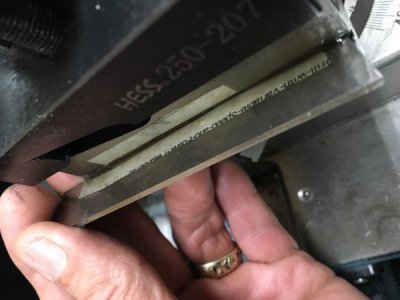Is it the same solder the HVAC guys use?
Ken,
Generally speaking, yes. There are several brands available as well as manufacturers and product mixes. Welding shops
carry this and also the flux. By the way, the flux can be unhealthy if used in a closed space not to mention any silver solder
mixtures that contain cadmium as it can cause permanent breathing problems. Fortunately most of the silver solders
do not contain cadmium any more. Definitely read the labels and pay attention to any warnings on the packaging of both the solder
and the flux.[/QUOTE]
Here's a little more information on silver solder and flux. I use a Harris product called Stay Silv which contains potassium
fluoride and difluorodihydroxyborate. Fluorides as you may or may not know are some extremely reactive compounds
used in this case for "wetting" or maybe ease of flow would be another way to put it. It's pretty difficult to do silver
soldering without the flux because the solder just won't flow properly. Knowing about the products goes a long way
to its safe use. Basically on the labels they say to not breathe the fumes or have skin contact or eat, drink or smoke
while using this product but they don't say why. Now we know why. To sum it all up, a little common sense thrown
in goes a long way to being safe in the shop. Harris makes another product called Stay Silv 15 which is a silver soldering
rod. I have used it but prefer the finer silver solder wire for small work. The rod is pretty good for cementing carbide
on to various tooling like boring bars or lathe cutters. Silver soldering is a good skill to have in the shop and found to
be quite useful when the need arises.
On the less serious side, better living through chemistry!

I had to inject a little humor, keep

in the shop, use your

, don't be a

.
Geez, these emoticons are fun! Have a good day.


